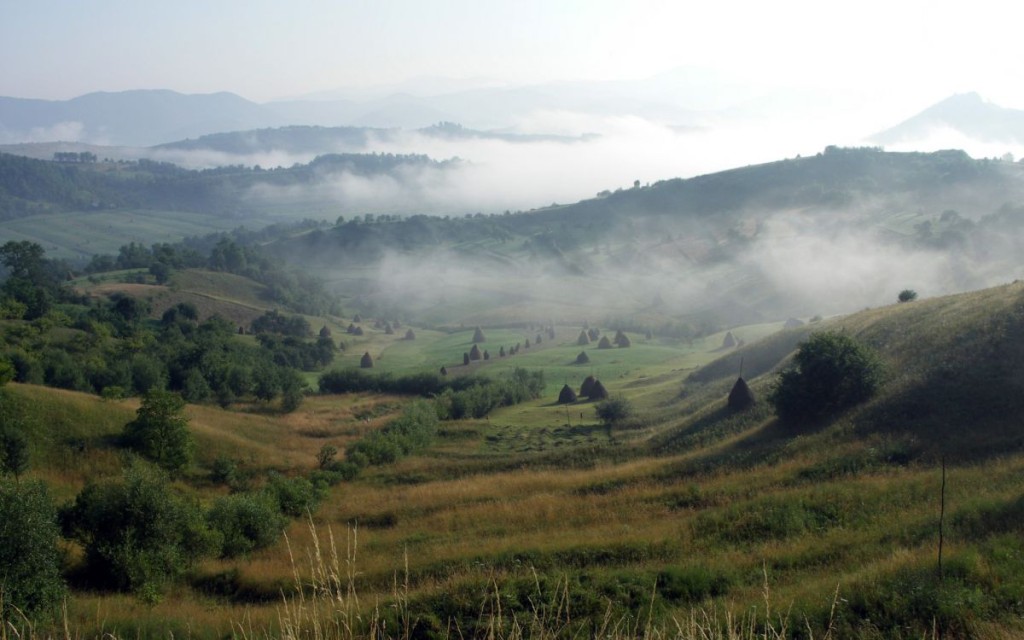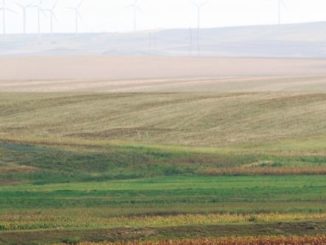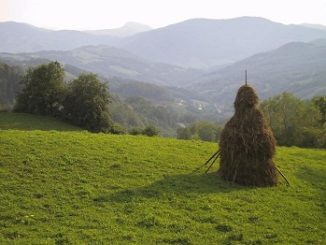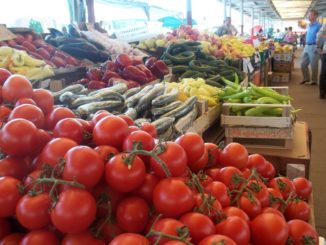 In areas with giant, merged agricultural lands, local populations suffer greatly due to poverty. While business or wealthy oligarchs take ownership over huge tracts of agricultural land, they also push into poverty a large number of smallholders. Looking at the poverty map of Romania, created by the Romanian National Institute of Statistics (NIS), one can observe a well defined overlay between acute poverty and large land ownership.
In areas with giant, merged agricultural lands, local populations suffer greatly due to poverty. While business or wealthy oligarchs take ownership over huge tracts of agricultural land, they also push into poverty a large number of smallholders. Looking at the poverty map of Romania, created by the Romanian National Institute of Statistics (NIS), one can observe a well defined overlay between acute poverty and large land ownership.
The top of the countries’ large landowners is colorful, containing controversial characters like the Lebanese Jihad El Khalil – 43000 hectares, Andreas von Bardeau, Count from Austria – with a 31000 hectare empire, or the Portuguese agribusiness investors from Martifer (Prio Foods) – which own around 25000 hectare of land in Romania. The export orientation of these investors is not a secret and also as the statistical facts show: in 2013 Romania exported 4.7 million tonnes of wheat, doubling the figures of last year. The country also exported 3.2 million tonnes of corn and 1.4 million tonnes of sunflower seeds.
As for the poverty rate? In 2012, the poverty and social exclusion rate of Romania reached to 42% of its population (the EU average being 25%), on a continuous rise, placing Romania amongst the poorest countries in the EU, after Bulgaria. NIS also shows that the most poorest regions of Romania are the North-East, South-East and South-West, areas declared as disadvantaged, also affected by strong agricultural land consolidations and land grabbing.
A day laborer’s life from the south

One of the wealthiest landowners of Romania, Ioan Niculae, maintains his vast agricultural empire from the south of the country through the work of impoverished peasants, leaving them unpaid for months in a row. An investigation of Romania Libera, one of the countries’ leading newspapers, unveiled disturbing facts about Niculae’s businesses, including InterAgro, his agricultural holding. After 12 hours of work, day laborers receive not more than a bread or some flour.
Company trucks scoop through southern villages every morning, gathering day laborers for the lands administered by InterAgro. People come from as far as some tens of kilometers with the hope that by the end of a long working day, they will receive 40-50 Lei (10-12 Euro), according to the law. This rarely happens. Most of the time they receive their Spring works’ worth as late as Christmas.
According to one farm manager, in 2013 day laborers worked all spring and summer just for some food: they received a daily quota of food products, bread, oil or flour produced by InterAgro’s facilities. At the beginning of the year they also received a hot meal, but then it was reduced to one bread per day.
Vertical integration all the way
“Boss” Niculae received consistent support from the Government over the last years, under the guise that he would develop one of the poorest regions of the country. InterAgro chose to invest in southern Romania hundreds of millions of Euro, buying up numerous old communist farms for more than modest sums. Also, between 2000 and 2010, the area was declared disadvantaged so the company benefited from huge tax exemptions.
InterAgro Holding is one of the most aggressive exploiters of southern Romania. Along with the tens of thousands of agricultural land the company also invested in 370 ha of vineyards, 260 ha of orchards and around 1000 ha of tobacco plantations. The company also holds vegetable greenhouses, meat and dairy processing units and oil factories.
Ioan Niculae, along with ex ministers of Romania, is also under suspicion for the undermining of national economy. According to DIICOT, Romanian Agency investigating organized crime, between 2006-2010, two ministers approved, signed and supported in the Government several policies and memorandums which had to favored the financial interests of Ioan Niculae.
Ministers got their pay check, how about the day laborers?
 Employers all over Romania reported a total of 174,980 day laborers last year. Unofficially, this number is much higher – and the value of fines, more than 1 million lei in 2013 (almost 250.000 Euro) says a lot.
Employers all over Romania reported a total of 174,980 day laborers last year. Unofficially, this number is much higher – and the value of fines, more than 1 million lei in 2013 (almost 250.000 Euro) says a lot.
Agriculture remains the business activity most heavily relying on day labor. The “law of day labor” clearly stipulates that people employed like this have to be payed by the end of each day of work. It also says that “bosses” like Niculae would have to pay a fine as high as 20.000 Lei (4.500 Euro) for each day laborer which didn’t receive its pay on time. Nonetheless, Ioan Niculae and other large land owners ruthlessly rule over their agricultural assets. Their motto might as well be: “A loaf of bread a day will keep the poor working for us anyway”.
Landless and dependent on regional landlords, day laborers in agriculture trying to earn their survival are currently faced with two options: a days worth of food for work on Romanian lands or used as cheap migrant labor in the West. Many of them have been there, and have done that too.
In more detail: Bardeau’s Empire: an Austrian landgrabber
More from Attila Szocs
- Romanian alternative food networks: growing through the cracks
- Victory for Romanian peasants over gold mining corporation
- Food Sovereignty: an idea whose time has come.
- Public Land Agencies: French SAFER model safe for Romania?
- Elections 2014 in Romania
- New open source database uncovers land grabbers
- Organic Participatory Guarantee Systems – a Brazilian model.
- Let there be biodiversity! The importance of sharing free seeds




